Table of contents
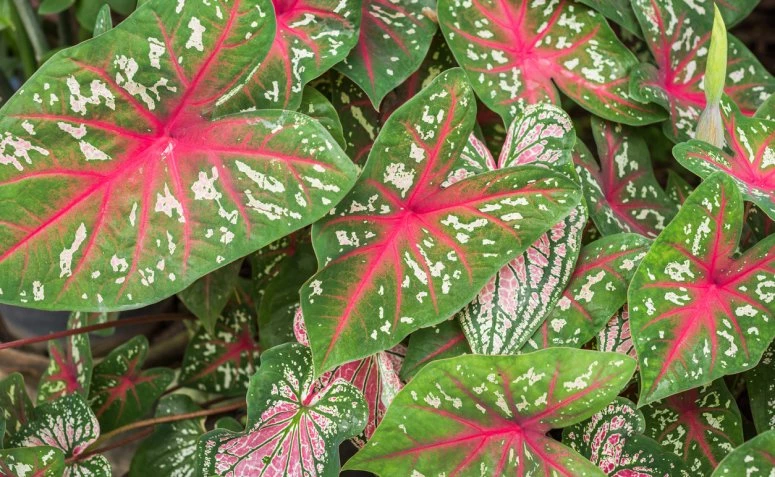
The caladium is a plant that is easy to find and very common to grow in Brazil. Also popularly known as tinhorão, the foliage has countless variations and enchants with leaves of different colors that seem hand-painted. Find out more about this vegetation, check out care tips, and get inspired to add its colors to your decoration:
Most common types of caladium
There are several variations of the genus caladium, with numerous species records! Below, check out the most common types:
Caladium bicolor
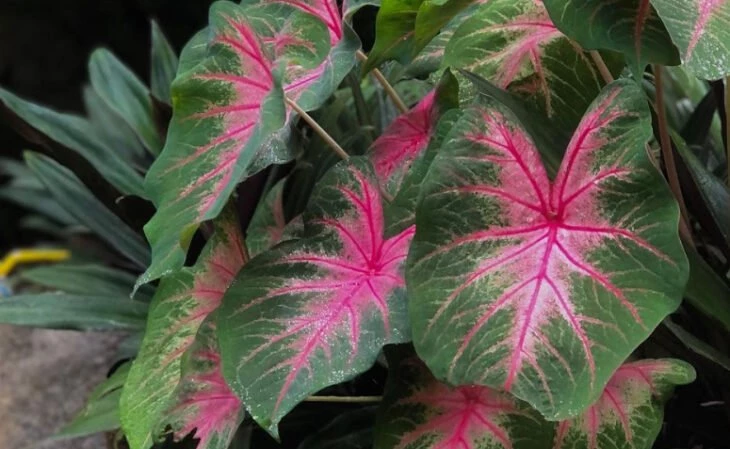
It is the most popular type grown in homes and gardens. As the name implies, it has a mixture of colors with shades ranging from pink, green, and white, on pointed heart-shaped leaves.
Caladium Candidum
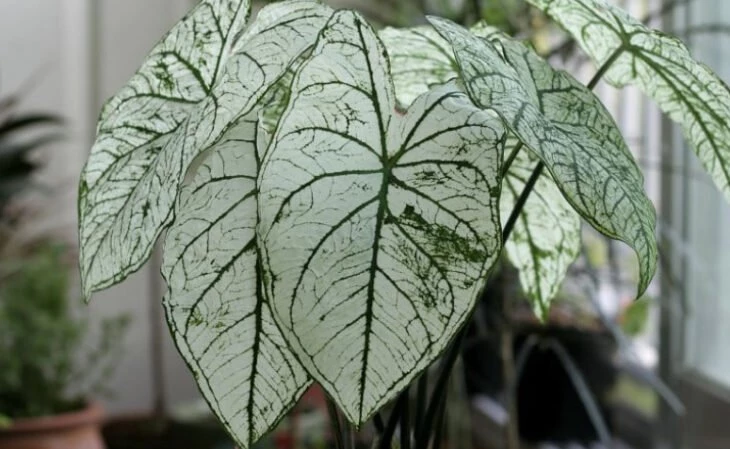
It is also known as angel wing or white caladium, since its leaves are whitish with pronounced green veins.
Caladium Humboldtii
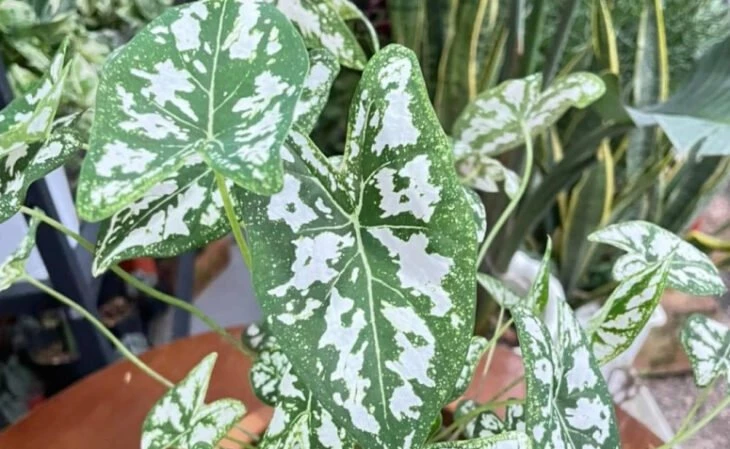
This species brings an intense green look with light spots scattered throughout the center of the leaf.
With exuberant colors, the different foliages of caladium easily stand out in compositions in the garden or in pots for decoration. Choose yours!
How to care for caladium
Sophia Louise Karl Queiroz, an agronomist at Quero Clorofila, explains the most important details for successfully caring for and growing caladium:
- Light: Sophia explains that caladium needs bright light, and can be grown in shade or half-shade, "with hours of sun in the morning or late afternoon."
- Watering: the professional points out that watering can be frequent, since caladium appreciates slightly humid soil. but she warns: "caladium can confuse us a little and wilt when it lacks water, and also when it receives too much water. in the case of excessive watering, caladium can "faint" and rot its bulbs and stems". thus, she stresses the importance of always checking the substrate to ensuremoisturizing in the right measure.
- Humidity: is a plant that appreciates moisture in the air, so she also recommends spraying its leaves with water.
- Substrate: "caladiums need a light, well-drained substrate that is rich in organic matter and always kept slightly moist," says Sophia.
- Winds: the agronomist advises keeping your specimen away from wind, "because they have delicate leaves.
- Winter: Sophia explains that during winter the plant usually goes into dormancy and ends up losing all its leaves: "During this phase, it is important to drastically reduce the frequency of watering, so as not to rot the bulbs.
- Toxicity Sophia says: "caladium is a toxic plant, because it has calcium oxalate crystals that attack mucous membranes and can cause several negative and dangerous reactions in organisms," informs Sophia.skin."
Also according to Sophia, "caladium is a Brazilian native plant, from the tropical forests". Thus, it is an easy option to cultivate in several regions of the country. Follow the professional's recommendations and enjoy all the beauty of the colors of this plant.
Learn more about caladium
And to find out even more about this amazing foliage, check out videos full of information:
See_also: 10 types of purple flowers to add a touch of color to the homeHow to grow caladium
Learn how to prepare a substrate for planting caladium, proportions for adequate soil, and options to ensure good drainage.
Best time to plant
Discover how to grow caladium bulbs, the best time to do it, and the ideal place to grow your plant at home.
Dormant Calladium
Learn more about the dormant period of caladium and its importance in the plant's life cycle.
How to grow caladium in water
Here are tips for growing your caladium in water. A different way to insert the plant into your decoration. You can also use this technique to help propagate seedlings.
See_also: House with a balcony: 80 inspirations that are full of warmth and freshnessWith all these tips, you can already have a beautiful caladium in your collection!
15 caladium pictures to admire the beauty of the plant
Here are ideas for using caladium in decorating and displaying wonderfully colorful foliage in your home:
1. there is a great diversity of caladium colors

The bicolor variation is the most common in Brazil
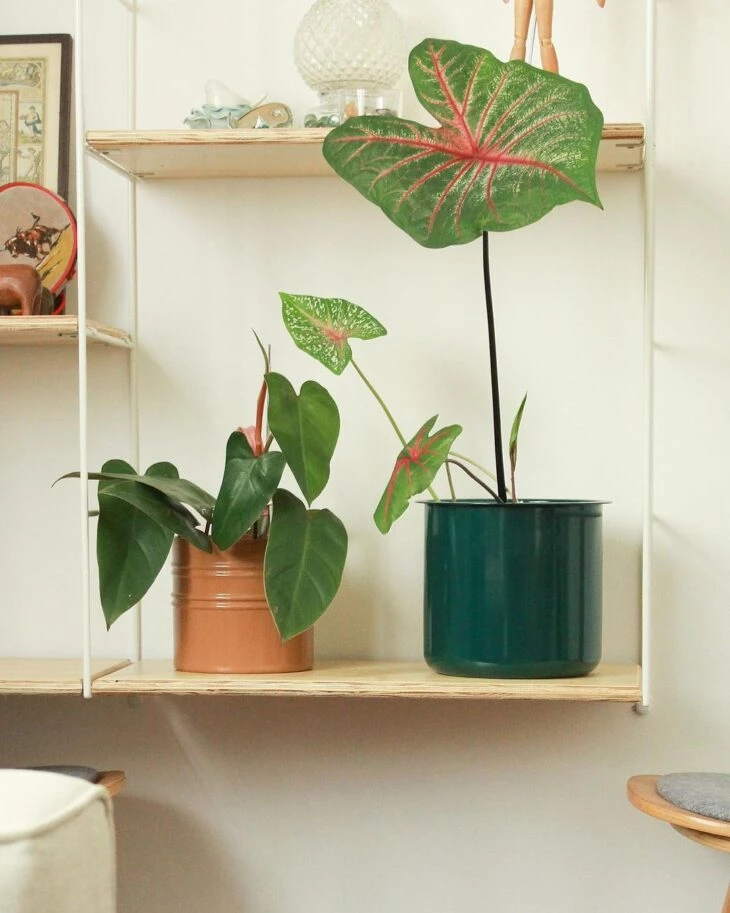
3. the leaves have an amazing mixture of shades
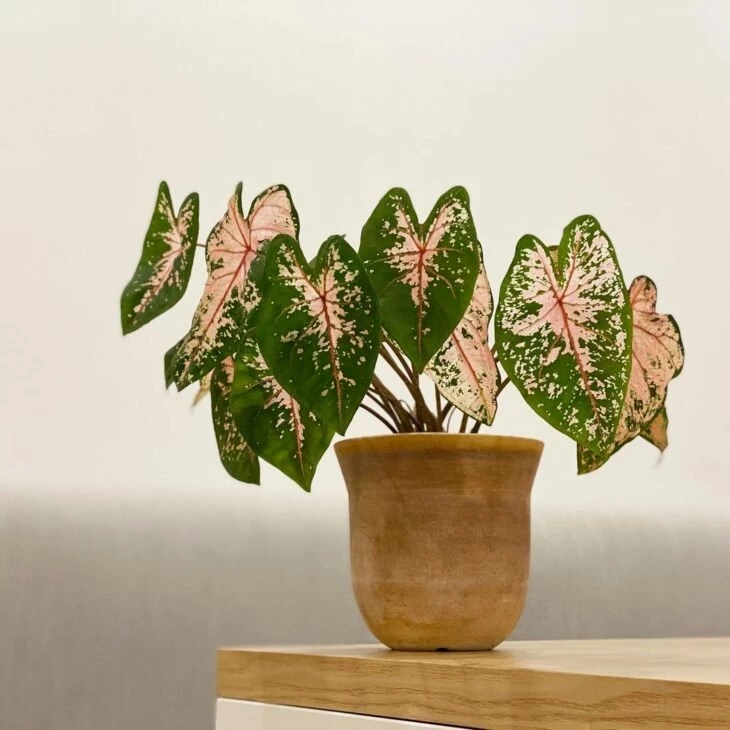
4. they look great in arrangements on furniture

5. and perfect for coloring any corner

6. you can grow different types of caladium

7. or mix the foliage with other plants
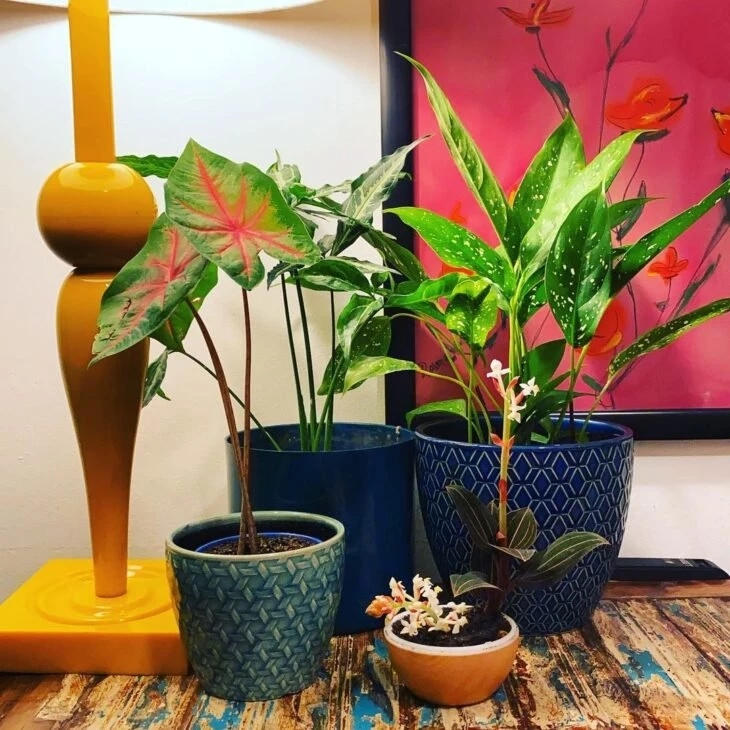
8. can easily be grown indoors

9. isolated, caladium is lush
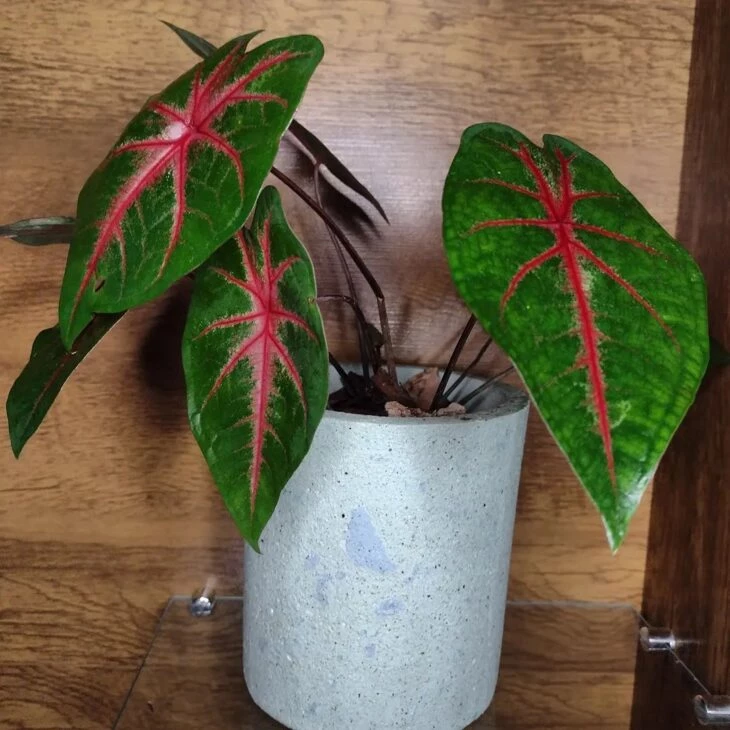
10. but it stands out even along with other species
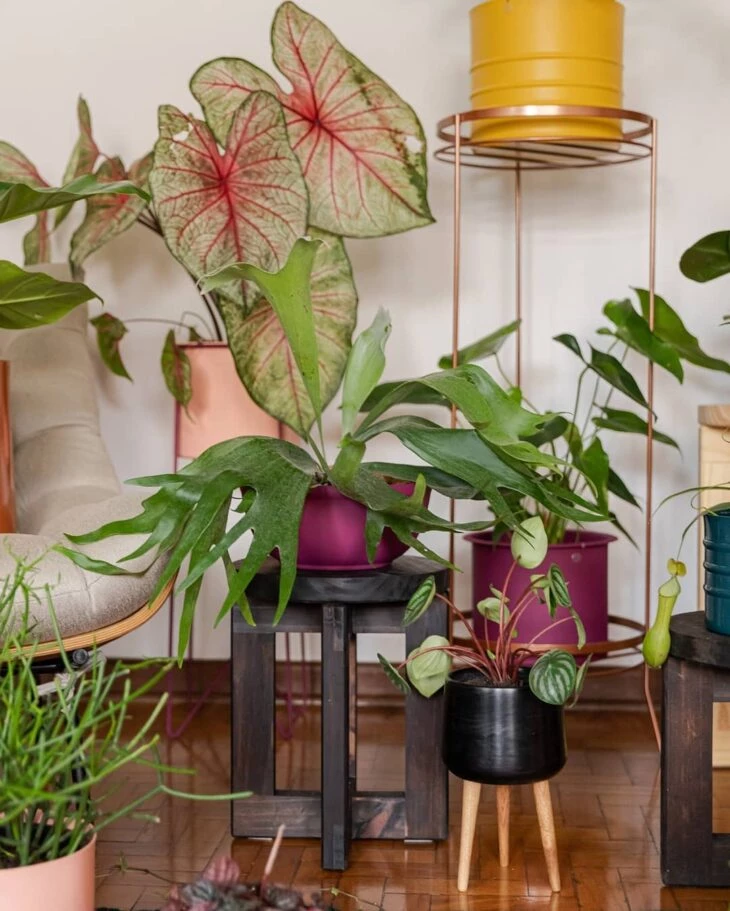
11. there are clear and delicate versions

12. and foliage with very intense colors

13. brighten up your garden with this plant

14. make a caladium collection
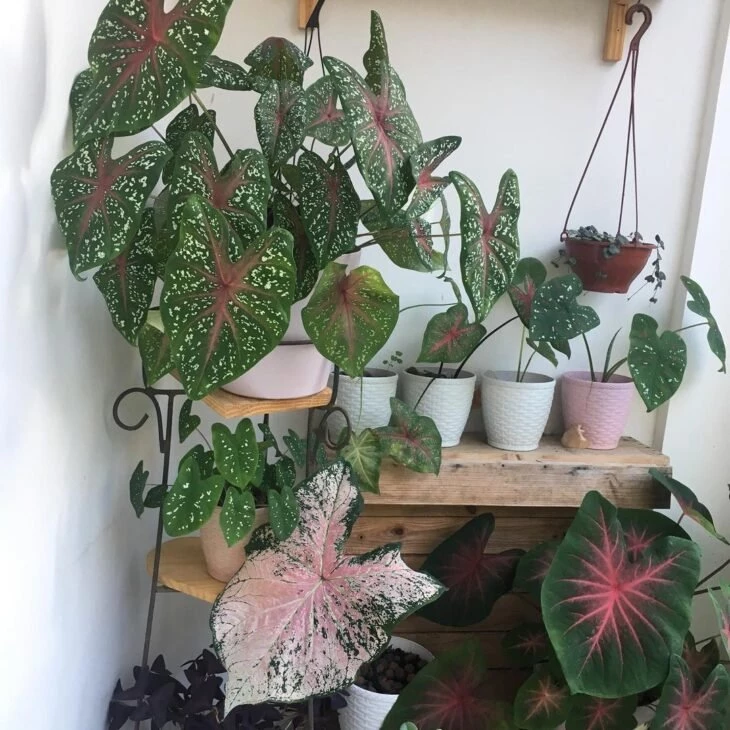
15. and be dazzled by its wealth of colors

The caladium catches the eye with its colorful leaves! urban jungle .


